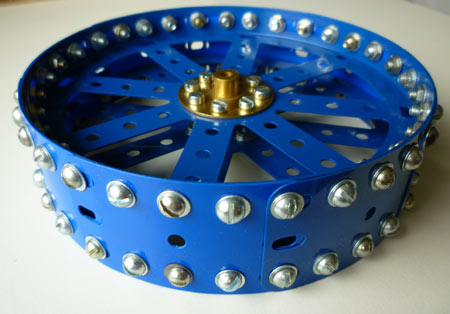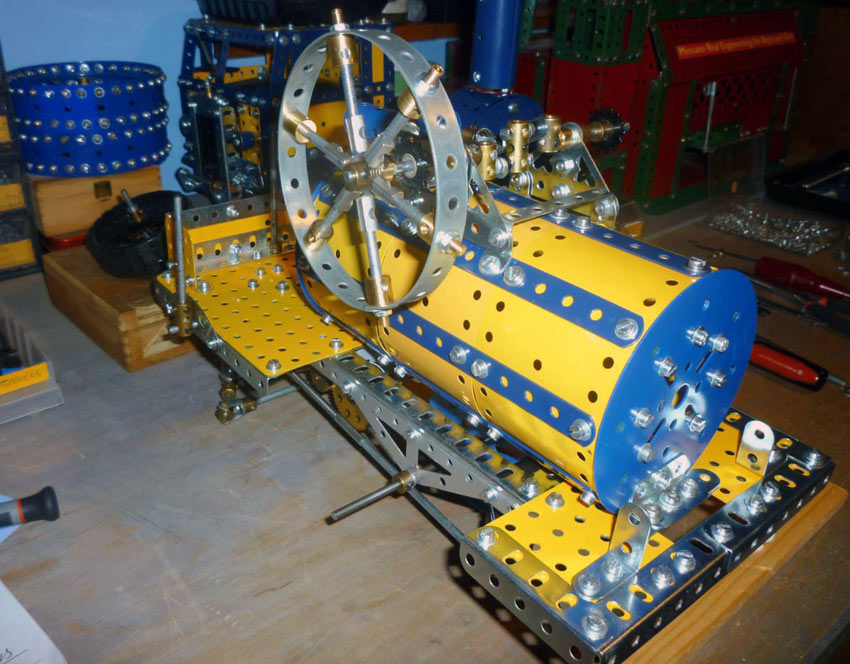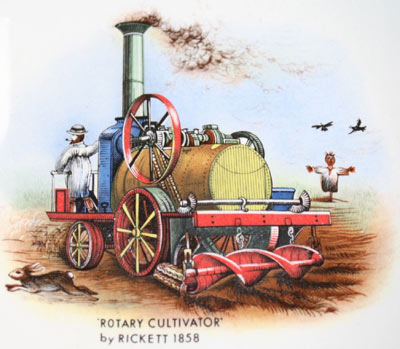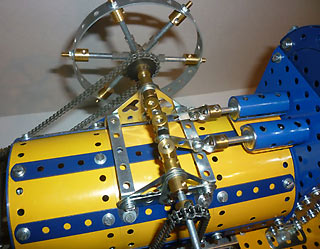
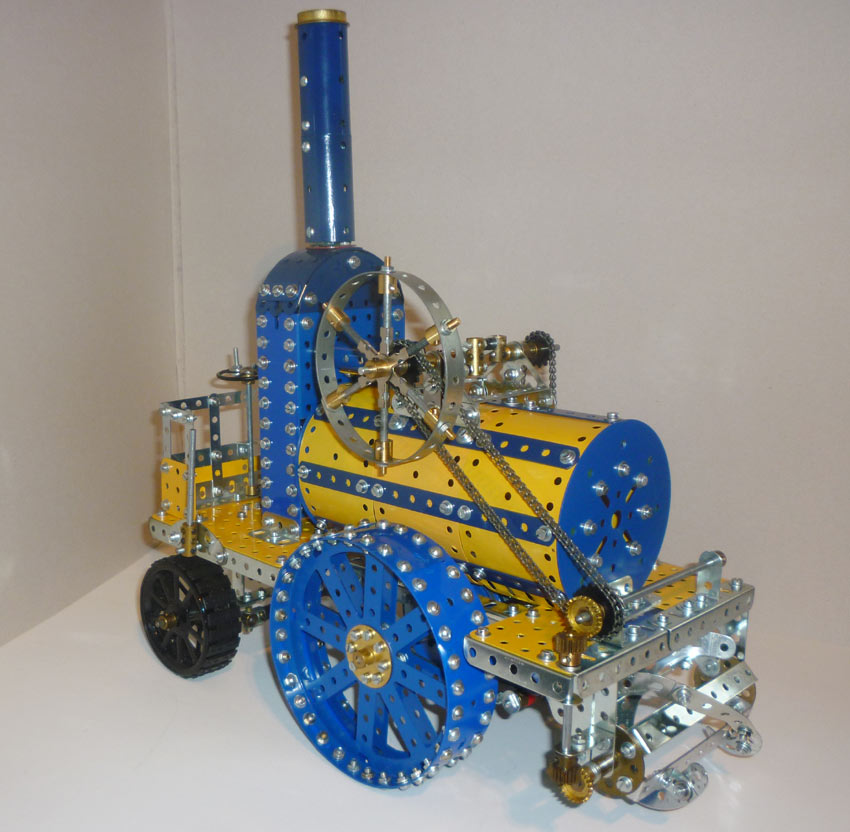
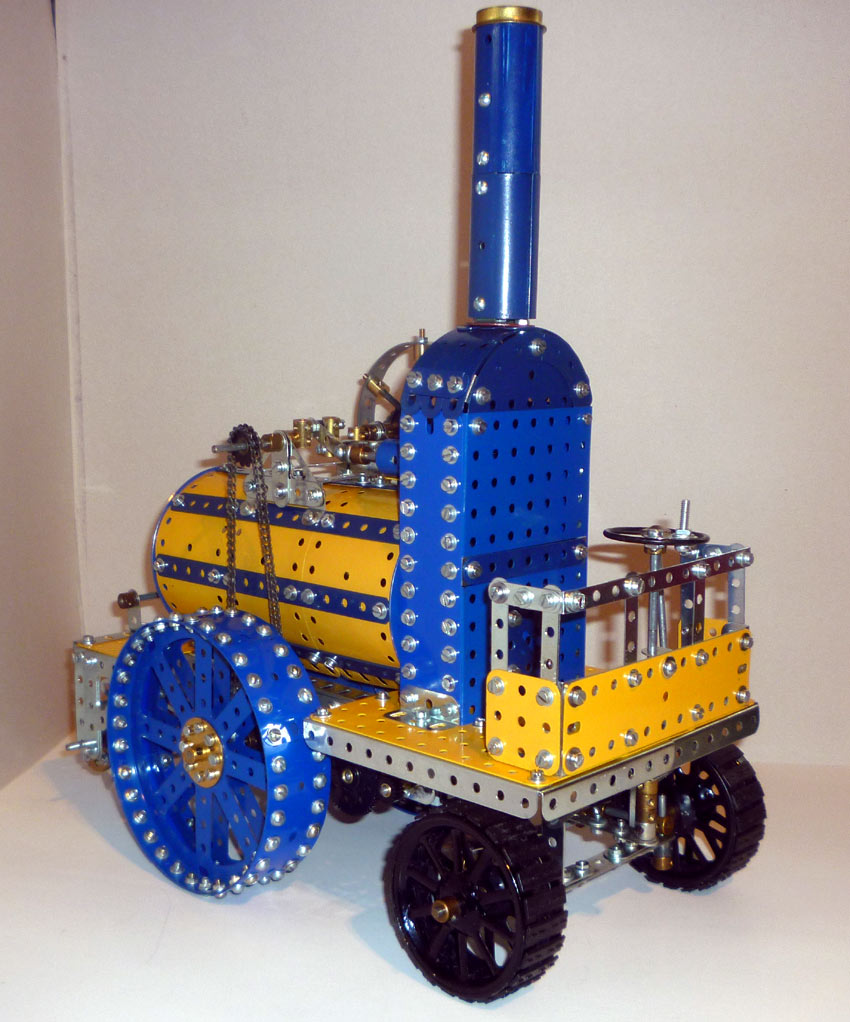
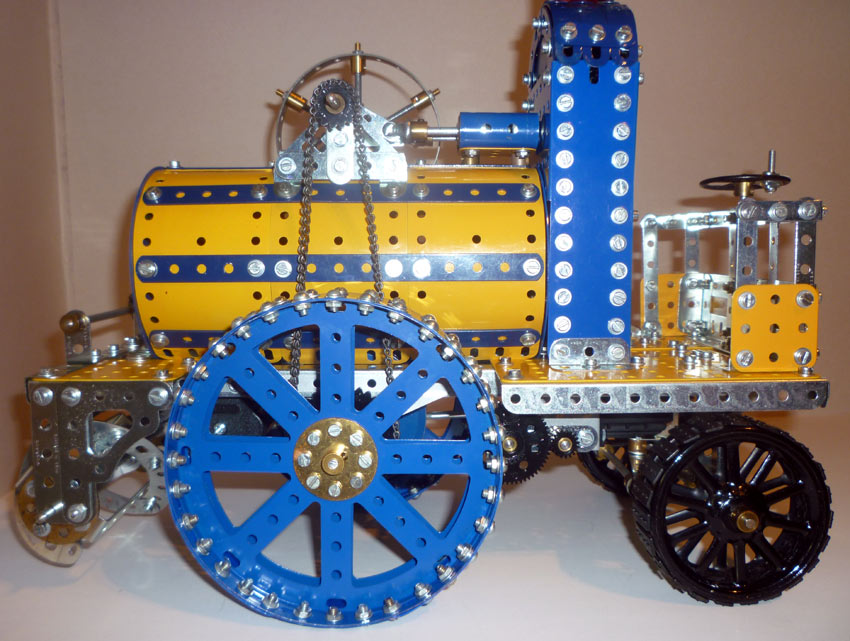
The machine operated in much the same manner as a modern garden cultivator with rotating blades to break up the soil. The 7' (2.1m) wide blades could be changed for different tasks and soil conditions. The machine performed its task well apparently but there is no evidence that it was put into production. Following the success of this machine Thomas Rickett built a three wheeled steam-powered carriage. In 1860 a second example was commissioned, the carriage was advertised but no orders were forthcoming. After studying the Meccano magazine instructions I felt that the machine did not look robust enough for the function that the prototype was intended. A scan from the original Meccano magazine is shown on the left. After some research on the web I discovered an engraving of the original machine unfortunately it is owned by a picture library and subject to copyright. This showed the whole machine had a very chunky appearance unlike that depicted in the instructions. I built the model using 1970's zinc, yellow and blue parts plus some 1978 dark blue parts. I would imagine that the original machine would probably have been finished in a black lead paint. However It perhaps could have been painted in bright colours to show at the Royal Agricultural Show, if it ever was.
To make the wider, bolt clad rear wheels clear the chassis and boiler I had to raise their bearings slightly and used a pair of 113 girder frames an attractive but little used part. The model is driven by a small contemporary M0 French motor, that will propel the weighty model along at a steady pace. The motor is controlled by a lever connected by a linkage to the battery box located at the rear of the machine. The underside showing this and the drive train is above right. The original model specified the Meccano Embo electric motor, not owning one I substituted the newer French motor . One thing I failed to incorporate in my model was a mechanism for raising and lowering the cultivator essential for traveling between fields. The 1968 instructions did have a sliding drive shaft to disconnect the cultivator but after making many changes during the construction I was getting impatient to finish it by the time I got to the back! The rear wheels are each formed from two hub discs p/n118, bush wheel p/n24, wheel disc p/n24a, 8 plastic plates p/n 194, 64 dome head screws, 64 nuts, 128 M4 washers and 16 nuts and bolts for fitting the wheel centres. Its is necessary to 194 plastic plates to ensure hole alignment to be able to use each hole for a nut and bolt around the rim. I find that palstic plates must have washers to protect them form damage. The wheel could be used on many other vintage machines such as traction engines.
Picture below shows the model during construction.
The illustration below (courtesy of Enjoy-Antiques) is a rather fanciful engraving transfer from a ceramic plate depicting the cultivator possibly based on the more detailed engraving I used as reference. On the original machine the rear wheels were driven by reduction gearing to a large gear on the circumference of one rear wheel. The very earliest traction engines, such as those made by Savages of Kings Lynn were really converted ‘portables', which were horse-drawn, with drive chains taken from the crankshaft to the rear axle. The crown gears on the illustration are used to raise and lower the cultivator where as the gears on the Meccano version are used to drive it.
You can watch a short video of Rickett's cultivator in action by clicking on the You Tube logo. I have shown the model in forward and reverse directions but in reality the machine would not have done this. It was an enjoyable model to build, its always fun to go back through old Meccano magazines and manuals and improve on those old models. November 23 2012 revised July 24 2013 |
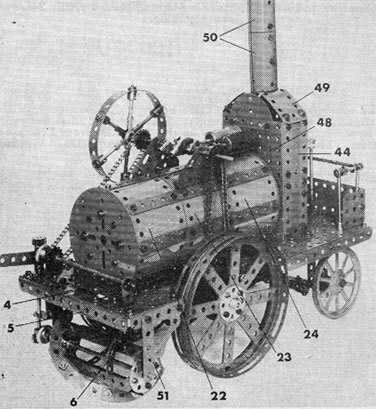 At the 2012 Skegness Meccano show I purchased a complete set of 1968 Meccano magazines, one of the Meccano models that immediately caught my attention was "A Rotary Cultivator" shown in the May edition. The prototype for this rather strange looking machine was designed by the agricultural engineer Thomas Rickett in 1858. It must have been an awesome sight belching smoke and steam as it progressed over the
quiet
and pleasant English countryside of the mid nineteenth century. The machine worked at a speed of 20' (6.09 m) per minute requiring three men to operate it.
At the 2012 Skegness Meccano show I purchased a complete set of 1968 Meccano magazines, one of the Meccano models that immediately caught my attention was "A Rotary Cultivator" shown in the May edition. The prototype for this rather strange looking machine was designed by the agricultural engineer Thomas Rickett in 1858. It must have been an awesome sight belching smoke and steam as it progressed over the
quiet
and pleasant English countryside of the mid nineteenth century. The machine worked at a speed of 20' (6.09 m) per minute requiring three men to operate it. 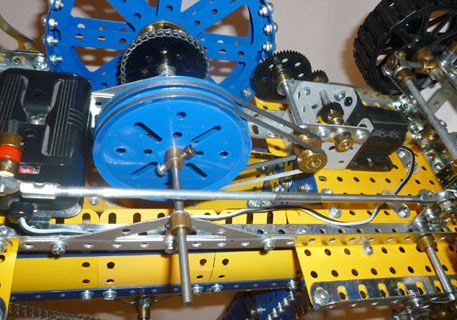 The first thing I needed to change were the rear wheels, I used two hub discs joined by 3x5 hole plastic flexible plates to give wider wheels. The front wheels using 19a artillery wheels would surely have sunk into the ground had similar wheels been on the original machine. I was inspired by a model field gun made by fellow enthusiast Norman Peter Brown using a pair of 19a artillery wheels with a length of Meccano 1970's flexible track sandwiched between the rims, giving a very chunky look. Norman has himself built the 1858 Cultivator model his version being closer to the Meccano instructions this was also an inspiration in building mine.
The first thing I needed to change were the rear wheels, I used two hub discs joined by 3x5 hole plastic flexible plates to give wider wheels. The front wheels using 19a artillery wheels would surely have sunk into the ground had similar wheels been on the original machine. I was inspired by a model field gun made by fellow enthusiast Norman Peter Brown using a pair of 19a artillery wheels with a length of Meccano 1970's flexible track sandwiched between the rims, giving a very chunky look. Norman has himself built the 1858 Cultivator model his version being closer to the Meccano instructions this was also an inspiration in building mine. 